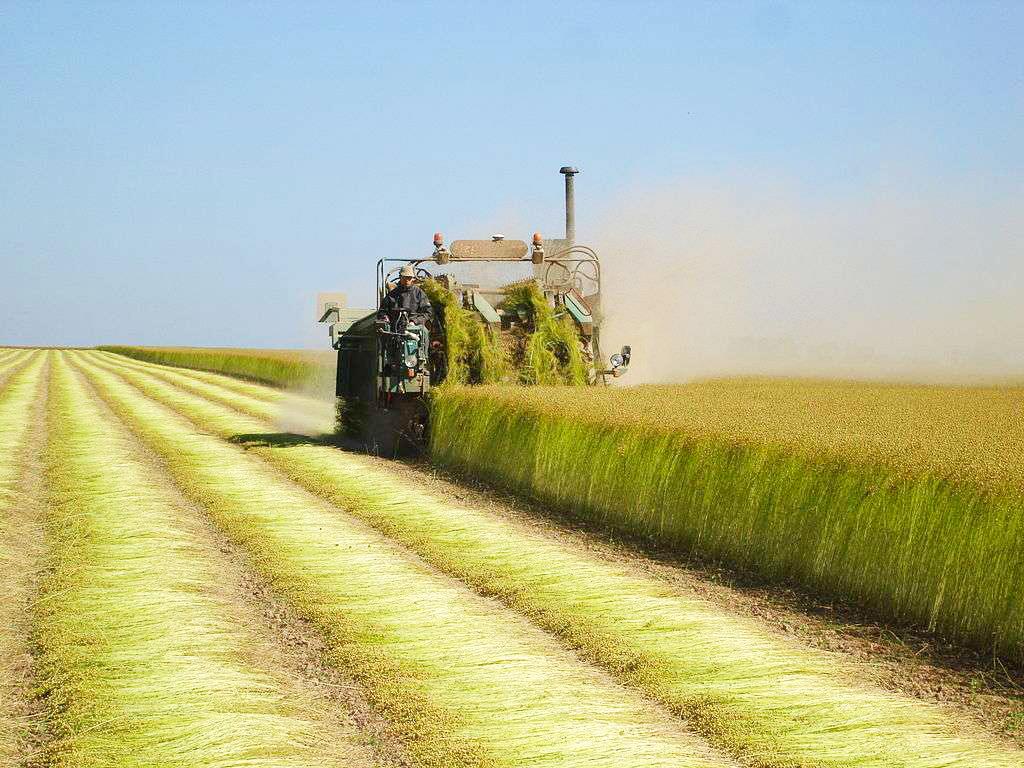Linen is a fabric we particularly like at Made & More. It’s soft, sustainable and available in so many different colors and styles that it’s always hard for us to choose! First linen items « by Made & More » emerged with the Elena boyfriend shirt. A loose and perfect shape thanks to its 100% linen composition.
Linen, 100% natural fabric
Ecologically responsible
Linen is a real carbon well. A linen hectare retains each year 3,7 tons of CO2, which means 340.000 tons of carbon saved each year, which corresponds to the quantity of emissions of the residents of a city as Antwerp. It is also a sustainable crop rotation as it comes back on a same parcel each 6 or 7 years, which allows the soil to be fertile and of good quality.
Human
Linen culture requires a high quality savoir-faire and local diversified workforce for each step of the production. Linen culture needs up to 5 times more qualified workforce than the one needed for wheat and guarantees a good socio-economic health for the rural who lives out of the linen culture.
Natural and zero waste
Linen protects soils and our water ressources: no irrigation (rain is enough) and very few pesticides needed. Linen culture requires 5 times less pesticides and fertilizers than cotton. In addition, linen is a zero waste fabric! Each part of the linen (short and long fibers, seeds, etc) is used in a large amount of applications.


European Union is the n°1 worldwide producer
European Union produces 70% of the world volumes: more than 120.000 tons each year. Linen is produced in several countries in the world: Belarus, Lithuania, Poland, Russia, China, Ukraine, France, Belgium, Netherlands and Egypt. A large coastal area (more than 92.000 hectares) stretches from Normandy to the Netherlands.
Linen is also a rare fibre which is impossible to outsource due to the particular climate conditions needed for its culture: a perfect mix between oceanic climate naturally wet and a light thermal density. Add to that, soils fertility and linen farmers savoir-faire. preprocess
"Linen doesn’t need irrigation (only rain water)
that is to say a yearly saving of 850.000 millions
of water cubic meters."
Linen properties
High absorption capacity
Linen has a high water absorption capacity thanks to the high hydrophilic property of the pectin, compound which combines fibres together. A high well-being feeling as the linen becomes thermo-regulating. Pectins can become saturated of water (up to 20% of their weight without causing a wet feeling) or release the water depending on the climate conditions. That’s why linen clothing are so comfortable even when the temperature is high.
Flexible, resistant and antibacterial
Linen fibres are long, which make the fabric flexible but resistant. It also means that the linen does not pill. Linen is also hypoallergenic and antibacterial. By the way, linen is still used today to make chirurgical threads.
How to take care of your linen items?
It is very easy to take care of your linen clothing. 30°C washing machine is enough (you can go put to 40°C) and ironing is easy. To ease the ironing, don’t hesitate to iron when the linen is still a little bit wet.


"A hectare of cultivated linen produces approximately 1500 kg of threads, enough to weave 3750m2 of fabric and therefore to produce 4000 shirts or 3000 t-shirts."
"Linen becomes softer with each washing! The pentose which links the fibres together when growing dissolves with each contact with water."
Sources: - Masters of linen / Linen & Hemp community
Get a 10% coupon by subscribing!











